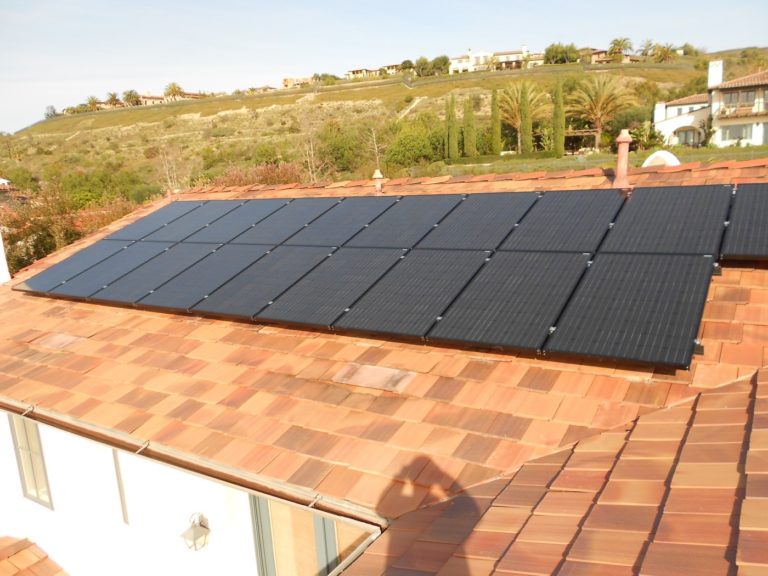30% Income Tax Credit Towards Your Residential Solar Installation
Since we’re in the midst of tax season, you’re probably wondering how to do your taxes the best you can. If you’ve installed solar panels on your home this year (2016), one of the ways to maximize your tax savings is by using the 30% Income Tax Credit (ITC) for Residential Solar Installations offered by the federal government. Previous articles, including one from Aikyum, have detailed the extension of the tax credit until 2019. (After that time, the credit will decrease, so hurry and install solar before then!) This article will let you know how to receive the 30% ITC for Residential Solar Installations the government promised so you can increase your savings.
Disclaimer: Aikyum installs solar panels and offers energy management solutions. We’re not tax professionals. What’s written here is only an example of one way to fill out the forms. Please ask a tax professional before submitting the forms to the IRS.
On to the Instructions:
Start by filling out IRS Form 1040, called the U.S. Individual Tax Return, like you usually do. When you reach Line 53, start filling out IRS Form 5695, called Residential Energy Credits. (You can view the form here, updated to the 2017 version.) Write your name and Social Security number at the top.
Line 1 asks for “Qualified solar electric property costs.” This means all the costs involved in installing the solar panels, including the cost of materials. Write the total cost in the space for line 1.
If you also installed solar water heating equipment, small wind energy equipment, or a geothermal heat pump, write the cost of those in lines 2-4. For line 5, follow the instructions on the form to “Add lines 1 through 4.” (If you only installed solar, you’ll just write the cost of the solar installation again.) Follow the instructions on lines 6-7. Especially relevant, note the “Caution” warning under 7a. As it says, skip the rest of the lines until 12 unless you installed fuel cell property.
On line 12, enter the credit, if any, you’re carrying over from your 2015 taxes. On line 13, if you didn’t install fuel cell property or carry over any credit, you’ll repeat the number from line 6.
The Tricky Part, Line 14:
The 30% tax credit for solar isn’t “fully refundable,” unlike Child Tax Credit. As a result, you can’t take a credit for more money than what your tax bill would have been without the credit. The IRS provides a worksheet for you to calculate how much credit you can take.
Here’s the worksheet:
Write the tax due without credit on line 1. On lines 2-8, write any nonrefundable credits you received. Add the nonrefundable credits and write that amount on line 9. Subtract the total nonrefundable credits from the tax owed without credits. Write that amount on line 10 of the worksheet and line 14 of Form 5695. The amount you just calculated is the limit on how much credit you can take this year. However, the rest of the credit won’t go to waste. You can carry over any credit you can’t claim this year and use it to lower your 2017 taxes.
Note that the amount you enter in line 15 is the “smaller of line 13 or 14.” Subtract the credit you can take this year from your total credit to find how much credit, if any, to carry over to next year. Next, write that amount in line 16. Write the amount on line 15 of Form 5695 on line 53 of Form 1040.
You’re done! Now you can continue the rest of your taxes, and maybe get a snack to reward yourself for finishing Form 5695.
Frequently Asked Questions:
Q: I added new solar panels to the panels I installed several years ago. Can I get a 30% credit on the new panels?
A: Yes, you can get a credit on the new solar panels. However, you can’t take a credit this year on panels you installed before 2016.
Q: Will I have to repay the government the 30% credit I took if I sell my house?
A: No, you get to keep the credit as long as the solar panels are on your house. The government made different laws for panels on businesses.
Q: Can I take credit for solar panels installed on a property I rent to other people?
A: You can’t take credit if you only rent the property to other people and never live in it yourself, but you can take partial credit if you live in it for part of the year. Whatever fraction of the time you live in it during the year is the same fraction of the credit you can take. Someone who lives in a house from August 1-31 can take 1/12 of the credit, because they live in the house 1/12 of the year.
Q: If my utility company gave me a rebate on the solar installation, do I calculate the tax credit using the cost before or after the rebate?
A: Calculate the 30% credit with the cost after the rebate.
Q: My state gave me a tax credit for my solar panels also. Do I use the cost of the installation before the state credit or after to calculate the federal credit?
A: The federal government uses the cost of the installation before the state credit.
Q: If I paid for part of my solar panels last year but the installation isn’t complete, do I take a credit on the money I’ve already paid?
A: No. The instructions for Form 5695 say solar panel costs “are treated as being paid when the original installation of the item is completed.” Therefore, you should wait until the year the panels have been fully installed and then take a credit on all the money spent to install them. If you spent money in 2015 or before as part of your solar installation and finished it in 2016, you also get a credit on the money spent in 2015 or before.
Q: If my solar company said I need a new roof for my new solar panels, do I add the cost of the roof to the other installation costs when calculating the credit?
A: Yes. According to the Form 5695 instructions, no expense paid for “a solar panel or other property installed as a roof (or portion thereof) will fail to qualify solely because the property constitutes a structural component of the structure on which it is installed.” That means a roof is a structural component. It won’t fail to qualify as part of the solar installation cost.
Additional Resources:
- The Database of State Incentives for Renewables and Efficiency gives information on incentives programs in each state, so it can help non-California residents.





